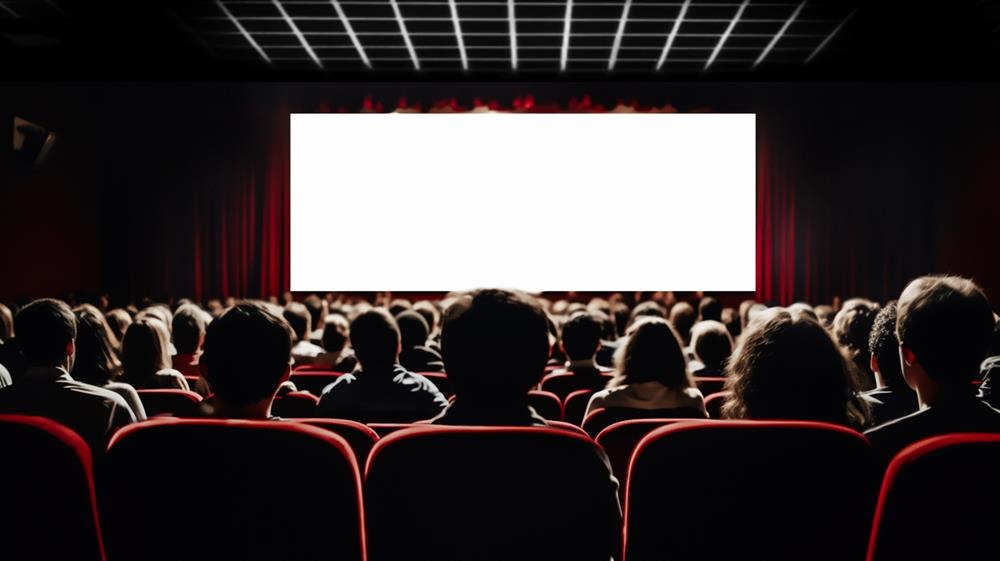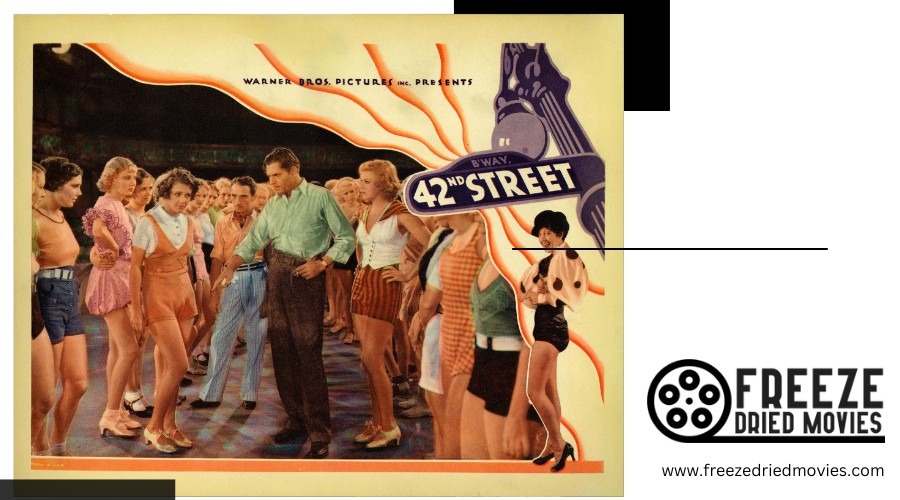How Much Did Movie Tickets Cost in the 1930s?

When considering the cost of movie tickets in the 1930s, it's essential to understand the economic backdrop of the Great Depression. During this period, ticket prices typically ranged from around 20 cents to 25 cents by 1937. Despite the modest increase, this reflected the film industry's efforts to maintain affordability while ensuring financial sustainability. Adjusted for inflation, these prices would be significantly higher today. To attract audiences during such challenging times, movie theaters employed various strategies, including double features, giveaways, and special promotions. These efforts not only made moviegoing accessible but also highlighted the cultural importance of cinema during the era.
Economic Context
The economic context of the 1930s, marked by the Great Depression, had a profound impact on movie ticket prices. During this period, the average price of a movie ticket dropped from 50 cents to about 25 cents to attract more viewers facing widespread financial struggles. With money tight, people sought affordable entertainment, making movies a popular choice.
To adapt to these changing consumer spending habits, movie studios increased their production, offering a variety of genres to ensure there was something for everyone, regardless of their financial constraints. This diverse array of films made it easier for families to justify spending on a night out at the theater.
In 1933, the inflation-adjusted price of a movie ticket would be approximately $6.14 today. By 1937, this figure had dropped to around $3.97. These price adjustments illustrate the movie industry's efforts to remain accessible and affordable during tough economic times. The fluctuating prices reflected the industry's adaptability and its significant role in providing a much-needed escape for many Americans.
Great Depression Impact
During the Great Depression, movie ticket prices dropped significantly, from 50 cents in the previous decade to about 25 cents by the late 1930s. This reduction made movies more accessible as studios aimed to attract audiences seeking affordable entertainment during tough economic times. Theaters became crucial social hubs, offering a variety of films that provided hope and escapism for financially struggling individuals.
Economic Hardships Influence Prices
During the economic turmoil of the Great Depression, movie ticket prices significantly dropped, mirroring the financial hardships faced by Americans. The average movie ticket price fell from around 50 cents to just 25 cents by the late 1930s. This decrease was a strategic decision by studios to attract viewers dealing with severe financial constraints.
In 1933, the inflation-adjusted price of a movie ticket was $6.14, showcasing how economic pressures were reshaping spending habits. Recognizing the need for accessibility, studios lowered the inflation-adjusted price to $3.97 by 1937. This made going to the movies a more feasible option for many households.
The affordability of movie tickets during this period turned cinemas into a popular escape for those struggling with daily economic challenges. By reducing ticket prices, the film industry offered a much-needed break from the harsh realities of the Great Depression. The darkened theaters provided comfort and a brief respite from financial worries, making cinema a crucial part of the American experience during tough times.
Accessibility and Entertainment Choices
During the Great Depression, movie theaters emerged as beacons of accessible and affordable entertainment. With ticket prices dropping to about 25 cents, they provided a cost-effective escape from the harsh realities of the time. Films allowed audiences to immerse themselves in worlds far removed from their daily struggles. This affordability meant that even during economic hardships, people could still enjoy a night out at the movies.
Theaters became social hubs, offering a sense of community and normalcy. Despite the financial anxiety, these venues provided a much-needed outlet. Studios recognized the importance of attracting wider audiences and adjusted ticket prices accordingly. This strategy succeeded, as film attendance remained high because people craved affordable entertainment that brought hope and relief.
The era's focus on escapism in films allowed audiences to temporarily forget their woes and engage in thrilling adventures or heartfelt dramas. Going to the movies was more than just watching a film; it was a communal experience offering comfort. Even in tough times, a movie theater ticket was a passport to a brief, yet cherished, escape.
Ticket Price Trends

Ticket price trends in the 1930s reveal a compelling interplay between economic hardship and the evolving film industry. During this decade, significant changes in movie ticket costs reflected broader economic conditions. In the early 1930s, amidst the Great Depression, the average price of a movie ticket was around $0.20, making it an affordable escape for many facing financial difficulties. By 1937, the price had climbed to about $0.25 as studios sought to enhance attendance despite ongoing economic challenges.
When adjusted for inflation, a 1933 movie ticket would cost approximately $6.14 today, highlighting the impact of the period's economic struggles on ticket pricing. Throughout the decade, the cost of movie tickets fluctuated considerably, driven by rising film production costs and changing consumer spending habits amid financial uncertainty.
The pricing strategies established in the 1930s not only responded to immediate economic pressures but also laid the groundwork for future ticket pricing models. This historical context illustrates how deeply intertwined movie ticket prices and economic conditions were, shaping the cinema-going experience.
Movie Industry Adaptations
Investigating the movie industry's adaptations during the 1930s reveals significant innovations in filmmaking techniques that enhanced the viewer experience. Studios frequently collaborated, pooling resources to produce films that attracted larger audiences. These changes reflect the industry's response to economic challenges and evolving consumer preferences.
Innovation in Filmmaking Techniques
The 1930s marked a transformative period in filmmaking, driven by innovation and adaptability. Purchasing a movie ticket meant stepping into an era where sound and color revolutionized the cinematic experience. Filmmakers were no longer confined to silent films; "talkies" introduced dialogue and sound effects, creating a richer and more engaging experience.

Three key innovations reshaped filmmaking in the 1930s:
- Sound Technology: The transition from silent films to "talkies" was groundbreaking. Synchronized sound improved storytelling, making films more dynamic and lifelike.
- Technicolor: Introduced in the late 1930s, Technicolor brought vibrant hues to the screen. Audiences eagerly flocked to theaters to witness films in dazzling color, making their movie ticket worth every penny.
- Special Effects and Set Designs: Advances in special effects and elaborate set designs allowed filmmakers to create fantastical worlds, offering an escape from the harsh realities of the Great Depression. This made cinema a popular and affordable form of entertainment.
These innovations not only enhanced the quality of films but also ensured that every movie ticket purchase provided a unique and memorable experience.
Collaboration Between Studios
During the 1930s, film studios collaborated in unprecedented ways to navigate the financial strain of the Great Depression. They pooled resources to share talent and technology, optimizing production costs. By collaborating, studios could produce more movies without compromising quality. This was crucial during tough economic times when every dollar counted and the demand for escapism was high.
Major studios often partnered on projects, distributing production costs across multiple companies. This strategy significantly reduced the financial risks associated with making a movie. Cross-promotional strategies further solidified these partnerships, as studios shared marketing resources to attract broader audiences. This collaboration was essential in maintaining high attendance at movie theaters, even when people had less disposable income.
Audience Engagement

During the economic turmoil of the 1930s, movie theaters offered a crucial reprieve, fostering a sense of community and resilience. With movie tickets priced between 20 and 25 cents, theaters became vital social hubs where you and your neighbors could find comfort in the shared experience of watching films.
Despite the financial struggles of the Great Depression, audience engagement flourished through several key factors:
- Affordability: Inexpensive movie tickets made cinema accessible to many, even in tough economic times. You could still afford to catch the latest films.
- Diverse Genres: The wide range of film genres, from musicals to dramas, catered to varied tastes, allowing everyone to find something enjoyable.
- Themes of Hope: Films often featured themes of resilience and hope, resonating deeply with viewers like you. This connection provided a temporary escape from daily hardships and inspired dreams of better times.
Cultural Significance
Movie theaters in the 1930s were not merely venues for film screenings; they were significant cultural hubs that influenced societal norms and values. A movie ticket, priced at just 25 cents, provided an affordable escape from the harsh realities of the Great Depression. This low cost enabled people from diverse backgrounds to gather, creating a unique social center where communities mingled and shared collective experiences.
The films of the era often featured themes of hope and resilience, reflecting societal struggles while offering emotional relief. Iconic film stars emerged as symbols of inspiration, providing audiences with a sense of hope and an emotional lifeline. Their stories and personas significantly shaped popular culture, serving as beacons of morale during tough times.
The cultural impact of 1930s films extends beyond their initial release. The themes and storytelling techniques developed during this period continue to resonate, leaving a lasting legacy in modern filmmaking. Thus, the cost of a movie ticket in the 1930s represented more than just affordability—it symbolized the invaluable cultural and emotional experiences theaters provided.
Promotional Strategies
During the Great Depression, movie studios capitalized on the public's need for escapism by lowering ticket prices to around 25 cents, aiming to attract larger audiences. They employed various promotional strategies tailored to the challenging economic climate of the era.
Firstly, studios launched targeted campaigns emphasizing the uplifting themes of their films. Posters and radio ads promised a much-needed break from daily struggles, resonating with audiences seeking relief.
Secondly, collaborations between studios and theaters were common, facilitating cross-promotions and special events that optimized resources and encouraged frequent visits to the theater.
Thirdly, innovative marketing techniques became prominent. Studios used film trailers and exclusive events to captivate diverse audiences. Special screenings and premieres were marketed at higher price points for affluent audiences, creating buzz and generating additional revenue.
Key promotional strategies included:
- Uplifting Campaigns: Highlighting entertaining themes to offer escapism.
- Cross-Promotions: Studio-theater collaborations to enhance attendance.
- Innovative Marketing: Using posters, radio ads, and exclusive events to attract diverse audiences.
These strategies were crucial in drawing people to the movies, offering a slice of joy during the Great Depression.
Long-term Effects
The promotional strategies employed during the Great Depression not only filled theaters during challenging times but also set lasting trends in the film industry. By reducing movie ticket prices to as low as 25 cents, theaters established new norms for affordability. This strategy guaranteed that cinema remained accessible to a broad audience, influencing future pricing models in the industry.
The legacy of Depression-era films, with their themes of hope and escapism, continues to resonate in modern cinema. These themes have shaped storytelling techniques and molded audience expectations, ensuring that films remain a source of comfort and inspiration during tough times. Additionally, the economic strategies of the 1930s laid the groundwork for adaptive business models capable of better responding to economic fluctuations, a practice that remains relevant today.
High film attendance rates during the 1930s underscored the importance of accessible entertainment. The adjustments in ticket pricing not only made movies affordable but also fostered long-term audience engagement strategies. This approach has maintained a lasting connection between films and diverse socio-economic demographics, ensuring that cinema remains an inclusive form of entertainment for all.



